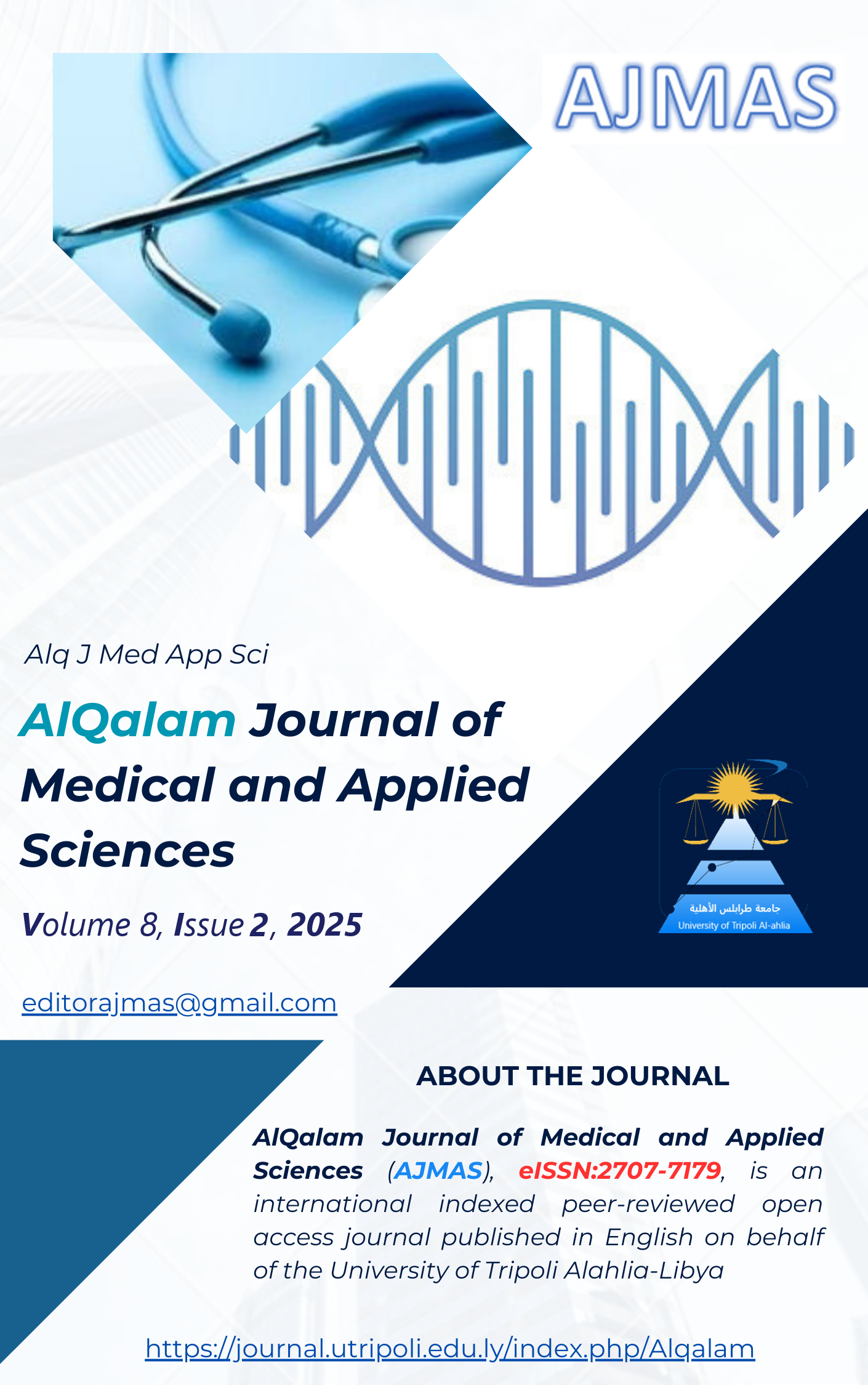Prevalence of Gout in End-Stage Renal Disease Patients
DOI:
https://doi.org/10.54361/ajmas.258221Keywords:
Gout, End-Stage Renal Disease, Hyperuricemia, Chronic Kidney DiseaseAbstract
Gout is a disorder of purine metabolism that results in hyperuricemia, but on the other hand, in ESRD patients, the main cause is decreased glomerular filtration rate (GFR), because of high uric acid in the blood, uric acid builds up in the fluid around joints and soft tissue, it forms tiny crystals called monosodium urate. The association between gout and chronic kidney disease CKD is described as mutual, and CKD is an independent risk factor for gout. This study seeks to determine the prevalence of gout among end-stage renal disease (ESRD) patients. The study was conducted in the State of Libya in Tripoli at the Tripoli Kidney Services Center on patients with renal failure. The number of samples used was 121, The study period was from April to July of 2022. Three analyses were carried out for all patients' urea, creatinine to assess the deterioration of the kidneys, and uric acid to diagnose gout. ESRD patients. All urea and creatinine results were high, and the mean of male urea results (146.984) and female (146.982), the mean of creatinine for females (8.63) was higher than males (8.48). and it was found that uric acid clearance has no relationship during dialysis with urea and creatinine clearance, The prevalence of gout among patients with ESRD in this research was 46.3 % (p < 0.000), and the prevalence rate in males is 46 %, while in females it is 47 %, mean age of females was 54.2 and males of 56.4.
النقرس هو اضطراب في أيض البيورين يؤدي إلى فرط حمض يوريك الدم، ولكن من ناحية أخرى، في مرضى الفشل الكلوي في مراحله النهائية، فإن السبب الرئيسي هو انخفاض معدل الترشيح الكبيبي (GFR)، بسبب ارتفاع حمض اليوريك في الدم، ويتراكم حمض اليوريك في السائل المحيط بالمفاصل والأنسجة الرخوة، ويشكل بلورات صغيرة تسمى يورات أحادية الصوديوم. يوصف الارتباط بين النقرس ومرض الكلى المزمن بأنه متبادل، ويُعد مرض الكلى المزمن عامل خطر مستقل للإصابة بالنقرس. تسعى هذه الدراسة إلى تحديد مدى انتشار النقرس بين مرضى الفشل الكلوي في مراحله النهائية (ESRD). أجريت الدراسة في دولة ليبيا في طرابلس في مركز خدمات الكلى بطرابلس على مرضى الفشل الكلوي. بلغ عدد العينات المستخدمة 121 عينة، وكانت فترة الدراسة من أبريل إلى يوليو 2022. أجريت ثلاثة تحاليل لجميع المرضى لليوريا والكرياتينين لتقييم تدهور الكلى وحمض اليوريك لتشخيص النقرس. مرضى الفشل الكلوي في مراحله النهائية. وكانت جميع نتائج اليوريا والكرياتينين مرتفعة، وبلغ متوسط نتائج اليوريا للذكور (146.984) وللإناث (146.982)، وكان متوسط الكرياتينين للإناث (8.63) أعلى من الذكور (8.48). كما وجد أن تصفية حمض البوليك أثناء الغسيل الكلوي لا علاقة لها بتصفية اليوريا والكرياتينين، وقد بلغ معدل انتشار النقرس بين مرضى الفشل الكلوي المزمن في هذه الدراسة 46.3% (p < 0.000)، ومعدل الانتشار عند الذكور 46%، بينما عند الإناث 47%، ومتوسط عمر الإناث 54.2 والذكور 56.4
Downloads
Published
How to Cite
Issue
Section
License
Copyright (c) 2025 Heba Abuhelala, Hiba Alsharif, Aya Abdulatif, Intisar Abukel, Najla Elyounsi

This work is licensed under a Creative Commons Attribution 4.0 International License.














